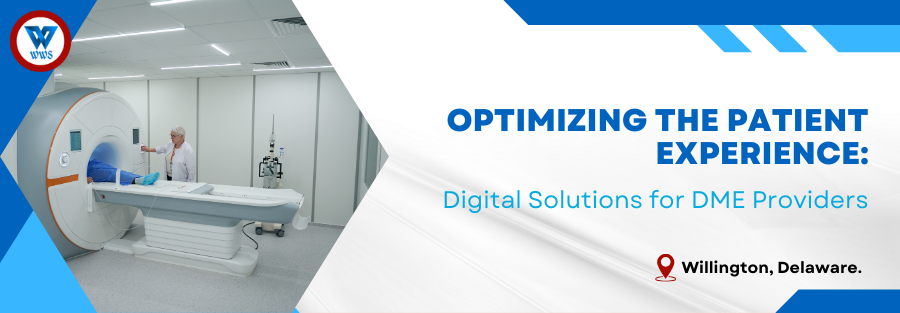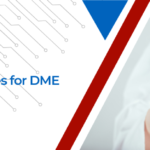In today’s healthcare landscape, patient experience has become a critical factor in the success of Durable Medical Equipment (DME) providers. As technology continues to advance, digital solutions offer unprecedented opportunities to enhance patient care, streamline processes, and ultimately drive business growth. This comprehensive guide explores how DME providers can leverage digital technologies to optimize the patient experience and stay competitive in an increasingly digital world.
The Digital Revolution in DME Patient Care
The integration of digital technologies in DME provision is transforming patient care in several ways:
- Enhanced Communication: Digital platforms enable more frequent and effective communication between providers and patients.
- Improved Access to Information: Patients can easily access their medical information, equipment details, and educational resources.
- Streamlined Processes: Digital solutions can simplify ordering, delivery, and maintenance of DME.
- Personalized Care: Data-driven insights allow for more tailored equipment recommendations and care plans.
- Remote Monitoring: IoT-enabled devices can provide real-time data on equipment usage and patient health.
Key Technologies Enhancing DME Patient Experience

Several digital technologies are at the forefront of improving patient experience in the DME industry:
1. Patient PortalsPatient portals serve as a centralized hub for patient-provider interactions. They typically offer features such as:
- Secure messaging with care teams
- Access to medical records and equipment information
- Online ordering and reordering of supplies
- Bill payment and insurance information
- Educational resources and support materials
Mobile apps can provide patients with on-the-go access to essential services and information:
- Equipment usage tracking and reminders
- Virtual assistance for equipment setup and troubleshooting
- Appointment scheduling and reminders
- Direct communication with support teams
Telehealth solutions can enhance the DME patient experience by:
- Facilitating remote consultations for equipment selection and fitting
- Providing virtual training on equipment use
- Enabling remote monitoring of patient progress and equipment effectiveness
- Streamlining follow-up care and adjustments
Internet of Things (IoT) technology can revolutionize DME by:
- Collecting real-time data on equipment usage and performance
- Alerting providers to potential issues before they become problems
- Enabling predictive maintenance to minimize equipment downtime
- Providing insights for continuous improvement of patient care
AI and ML can enhance patient experience through:
- Predictive analytics for personalized equipment recommendations
- Chatbots for 24/7 customer support and basic troubleshooting
- Automated reminders and follow-ups to improve adherence
- Analysis of patient data to identify trends and improve outcomes
Implementing Digital Solutions: Strategies and Best Practices
While the benefits of digital solutions are clear, implementation requires careful planning and execution:
1. Assess Current Patient Journey:Map out your current patient experience to identify pain points and opportunities for digital enhancement.
2. Prioritize User-Friendly Design:Ensure all digital solutions are intuitive and accessible, considering the diverse needs of DME patients.
3. Provide Adequate Training:Offer comprehensive training to both staff and patients on how to use new digital tools effectively.
4. Ensure Data Security and Privacy:Implement robust security measures to protect patient data and maintain HIPAA compliance.
5. Start with Pilot Programs:Begin with small-scale implementations to test effectiveness and gather feedback before full-scale rollout.
6. Integrate Systems:Ensure new digital solutions integrate seamlessly with existing systems to provide a cohesive patient experience.
7. Gather and Act on Feedback:Regularly collect patient feedback on digital solutions and use insights to drive continuous improvement.
Measuring the Impact of Digital Patient Engagement
To ensure digital solutions are truly enhancing patient experience, it’s crucial to measure their impact:
1.Patient Satisfaction Scores:Use surveys and feedback tools to gauge patient satisfaction with digital services.
2.Engagement Metrics:Track metrics such as portal logins, app usage, and telehealth session attendance.
3.Health Outcomes:Monitor how digital solutions impact patient health outcomes and adherence to treatment plans.
4.Operational Efficiency:Measure improvements in areas like order processing times and customer support efficiency.
5.Financial Impact:Assess the ROI of digital solutions, including cost savings and potential revenue increases.
Overcoming Challenges in Digital Adoption

Implementing digital solutions can come with challenges. Here are strategies to address common hurdles:
1. Resistance to Change:Clearly communicate the benefits of digital solutions to both staff and patients.
2. Technology Access:Consider providing options for patients with limited access to technology or digital literacy.
3. Data Integration:Invest in robust integration solutions to ensure seamless data flow between systems.
4. Maintaining the Human Touch:Use digital solutions to enhance, not replace, personal interactions with patients.
5. Keeping Pace with Innovation:Stay informed about emerging technologies and be prepared to adapt and update your digital strategy.
Future Trends in DME Patient Experience Technology
Looking ahead, several trends are likely to shape the future of digital patient experience in DME:
1. Augmented and Virtual Reality:AR and VR technologies could revolutionize equipment selection, fitting, and patient education.
2. Voice-Activated Assistants:Voice technology could make DME more accessible, especially for patients with mobility limitations.
3. Blockchain for Data Management:Blockchain could enhance security and interoperability of patient data across healthcare systems.
4. 5G Connectivity:Faster, more reliable internet connections will enable more sophisticated remote monitoring and telehealth capabilities.
5. Personalized AI Companions:AI-driven virtual assistants could provide personalized support and companionship to DME users.
Conclusion
The digital transformation of patient experience in the DME industry presents both exciting opportunities and significant challenges. By embracing digital solutions, DME providers can enhance patient care, streamline operations, and position themselves for success in an increasingly digital healthcare landscape.
Remember, the goal of digital transformation is not just to implement new technologies, but to fundamentally improve the way you serve and care for your patients. By focusing on patient needs, carefully selecting and implementing the right digital solutions, and continuously measuring and improving your efforts, you can create a patient experience that sets your DME business apart in a competitive market.
As you embark on this digital journey, keep in mind that technology should always serve to enhance, not replace, the human elements of care that are so crucial in the DME industry. With the right balance of high-tech solutions and high-touch care, you can create a truly exceptional patient experience that drives both better health outcomes and business success.
References and Further Reading:
- HealthIT.gov – Patient Engagement Playbook: https://www.healthit.gov/playbook/pe/
- Journal of Medical Internet Research – Digital Health Interventions: https://www.jmir.org/themes/304
- American Telemedicine Association: https://www.americantelemed.org/



